Yet again we found ourselves busy dealing with currents and winds and stressful circumstances, and forgot to pick up a camera for too much of the time. So in lieu of the pictures we could have taken we offer you a mixture of word pictures and pictures taken by others and licensed under Creative Commons, as well as some we took ourselves when we found a quiet place to rest.
When we set off toward the American locks at about 8:00 that morning we had no idea what was to come. Our batteries were fully charged when we started, and since there was not much wind (then) we motor sailed, planning to save our batteries as much as possible for when we would need their power in and between the locks.
It was a surprise to find ourselves battling currents a lot of the way, currents that grew stronger as we came closer to the Snell lock – in some places as strong as three knots. When we took a good look at the charts we could see why: not only were we in an area where the river was narrower but there were other rivers flowing into it and adding their current to the mix.
We had enough wind to make us heel a little, but not enough to overcome the current. This meant we were drawing on the batteries more than we wanted to, but couldn’t use the generator to recharge them (the generator doesn’t operate well at an angle). So we were hoping that there would be a pause at the pleasure craft dock when we got to the lock, giving us time to put some charge into the batteries. Things didn’t work out that way.
By the time we were approaching the Snell lock, sails down, we were already feeling frazzled. We missed seeing the pleasure craft docks (they are behind the approach wall on the right side, tucked well out of the way of the ships that slide along the wall as they approach the lock). We called into the lock on channel 16 to ask for directions, were told to call in on 17, did so and were told the lock would be ready for our approach momentarily, to come in and go to bollard 1 at the far end.
The system in these American locks is different. There are no ropes descending from above. Instead there are floating yellow bollards in numbered slits in the wall that move up and down with the movement of the water in the lock. They make using the lock very easy for a vessel like ours; you go to the assigned bollard, loop your ropes around it and hold them, then get ready to fend off as necessary. As the lock fills your boat and the bollard rise together to the top. Very simple. The only challenge for me was holding on to the ropes when the water tugged hard against the boat. I solved that by wrapping my rope around a stanchion in the next lock, the Eisenhower – when we finally got there.
We arrived at the top, and handed over our payment for the two American locks. Then we were through the gates and beginning the trip through the pool between them to the Eisenhower Lock, about 2.7 miles. And that’s when things got a little too interesting. We found ourselves travelling into an un-forecast and increasingly strong west wind, dead on the nose.
We had to motor. At least we were level, so we started the generator to help us maintain some charge in our batteries. But because we had to use more power than usual to battle the head wind we were putting much less charge into our batteries than we were using. And our motor seemed to be overheating. Between that and the lack of juice from the batteries it was giving us less and less power. Richard tried turning it off and then immediately back on again and nursed it as much as he could. But there were times when we were making no progress at all – a very uncomfortable feeling when you are expected to be able to maintain a decent speed.
By the time we were halfway between the locks the batteries were dumping (that’s when the voltage is lower than what’s needed to run the motor properly, and the batteries are down much further than they should be and going lower). We knew it was going to be close after battling the currents before the locks and the headwind between, and it was. But this ended up being much closer than we liked.
How did this happen? When we consulted Steve at Electric Yacht he explained that our meter is not accurate when we are charging the batteries and running the motor at the same time. The charging voltage is always higher than the actual voltage, and the meter reads the higher voltage – which explains why we ran out of power more quickly than we expected.
At one of those points where progress simply stopped Richard called the Eisenhower lock (another channel, 13) to ask whether, under these circumstances, we could pull out a sail. But that’s strictly forbidden in any circumstances. Instead they offered to let us stop and tie up against the approach wall going into the lock while the motor cooled, as long as it would not take too long. There would be commercial traffic later.
The linesmen came down to help us, but as we approached and the wind became less we were able to move more easily. We decided to press slowly on (something I’m sure they preferred). As we moved into the lock we moved more out of the wind and movement became even easier, though still very slow. We were again directed to bollard 1 and floated up to the top of the lock, where Richard asked if there was any place close by we could safely anchor.
That’s when we learned another of the differences between the Canadian and American locks. The American pleasure craft docks are small, but they are also safely out of the way of oncoming ships. So they told us we could stay on the pleasure craft docks overnight, something that’s not allowed at the Canadian locks. And the linesmen met us there, took our ropes and pulled us into the dock against the wind. They had offered to turn the boat around using the lines so we could leave more easily in the morning, but with the wind blowing hard it seemed a much better idea to stay as we were and turn ourselves around when we were ready to leave.
As soon as we were well tied up and tidied up Richard went to sleep. A good thing to do at the end of a long and stressful day. I de-stressed in my own way – by reading. Later we checked weather the way we used to. On this voyage our phones have become the devices we go to when we’re looking for information, and our apps and the internet are what we use. But now that we were in U.S. Territory our phones were on roaming, making their use an expensive option. Use of the VHF radio, on the other hand, was free. So we listened to weather on that instead, and planned our course for the next day. At that point it looked as if Iroquois would be another day away.
Later, too, we heard ships approaching the locks scraping along the other side of the wall…
The next morning at about 8:00 we made sure there was no traffic into or out of the lock, backed away from the dock and swung ourselves around (we seem to like that time for leaving). We came out from behind the wall into a good wind from the north, a perfect wind direction for sailing to where we were going. What a difference a night can make.
After a brisk sail we found ourselves at the Iroquois Lock in good time to go through that day. We waited for three commercial vessels to lock through. This is a much faster process than at the other locks because the difference in height from one side to the other is much smaller, sometimes non-existent. Once they were through we went into the lock behind a large and expensive-looking power boat, and not much later we were exiting our last lock and heading toward the marina close by, a marina we had learned about from internet friends we were looking forward to meeting there.
If it were not for them we might have missed it. The marina entrance isn’t obvious, at least not to us, though it’s well enough known to its summer residents and the many boats that come to winter on land there. There’s a weather-beaten sign on the shore and a cut beside it, and once you’ve turned past the sign you stay in the middle of the long cut, passing rocky pools on the way to the buoys that mark the entrance to the marina itself.
At the end of the cut the water widens into a lagoon. And there you find docks surrounded by former farmland and watery channels. It’s attractive, quiet (or it was while we were there) and peaceful, and we would never have known it was there if we had not been invited to visit by our soon-to-be flesh-and-blood friends. They gave us a gift we didn’t even realize we needed.
They helped us find space and time for a pleasant rest, shared good food, good conversation and good music and offered us a needed pause before we continued on toward what we were told would be our next hurdle, the currents of the Brockville Narrows. And then there would be a wild ride through the Thousand Islands on our way to Waupoos.
*****
Written by Margaret Mair
Some photos taken by Margaret Mair
Eisenhower Lock image: This work is in the public domain in the United States because it is a work prepared by an officer or employee of the United States Government as part of that person’s official duties under the terms of Title 17, Chapter 1, Section 105 of the US Code.
Iroquois Lock image: McCleary’s Spirit, a jet-fuel barge apparently, is being pushed by the tug, William J Moore, through the Iroquois Locks. The water was even that day on both sides. Picture by Mac Armstrong from Waterloo, Ontario, Canada, licensed under the Creative Commons Attribution-Share Alike 2.0 Generic license.

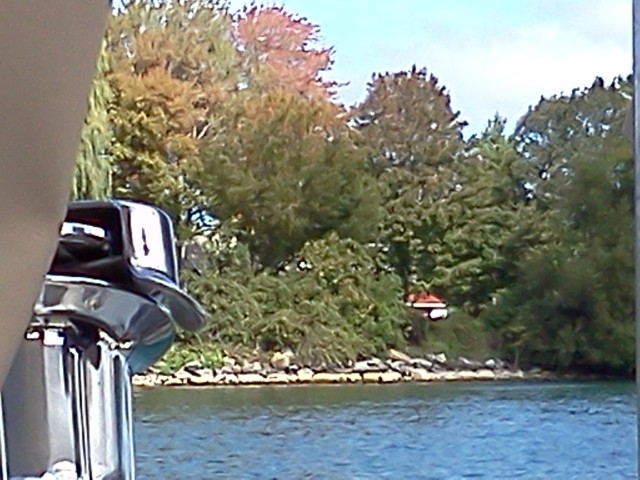
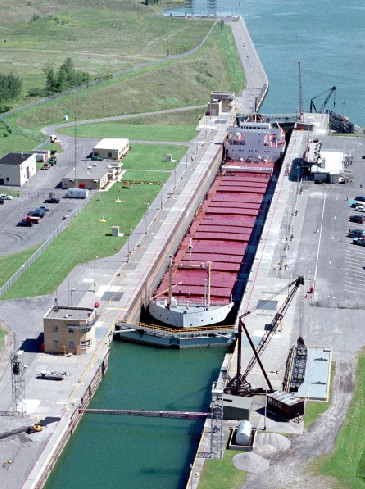
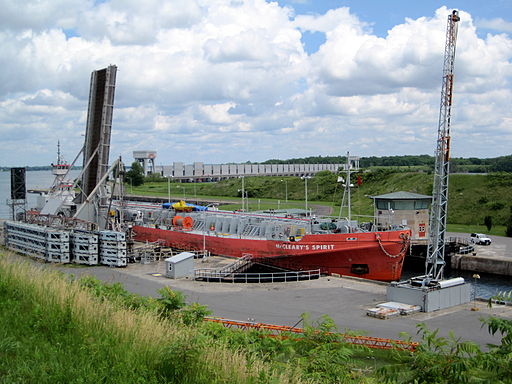
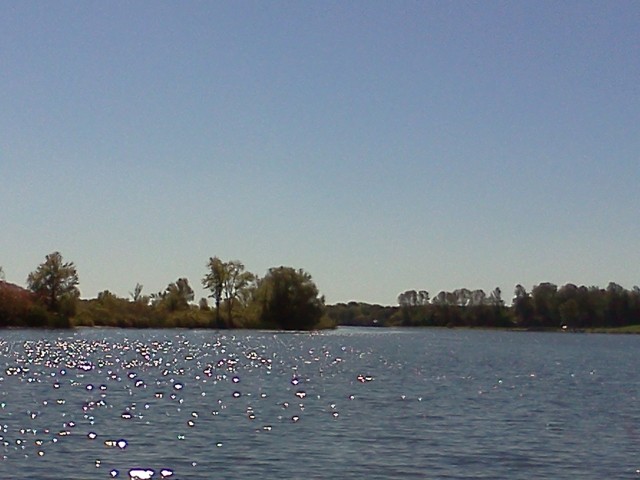
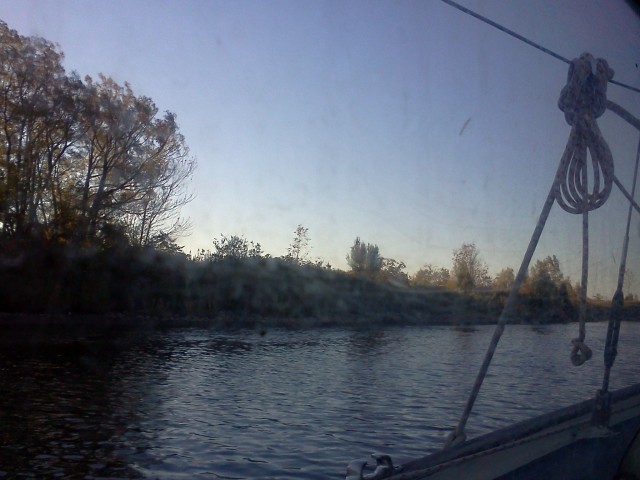
Hello Margaret Happy New Year and hoping you are snugasabuginarug. Are you seeing these volcanoes forming ? These pictures were taken at Centre Island at 10 this morning. The second shot shows frigid water spewing out the top. regards, Pat
Happy New Year to you too, Pat. Snug as a bug in layers of clothes is how I would describe it… Hunkered down and waiting for this cold snap to pass would be another way. Hope you’re warm and cosy!
wow.. i feel a bit stressed just from reading your account! if i end up making this trip – i think i will go the other direction 🙂 and maybe i will stick with my tohatsu 6hp outboard 🙂 This certainly is an adventure! happy new year..
Going in the other direction would be much easier! And happy new year to you too.